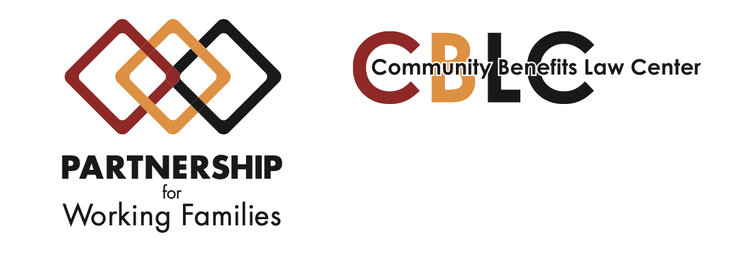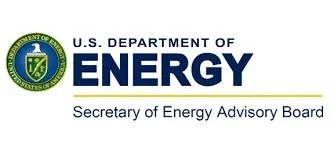
Community Benefit Agreement
Resource Guide
What is a CBA?
PolicyLink CBA Definition, Cincinnati Action Tank Toolkit
A CBA, Community Benefits Agreement, is a legally enforceable contract between the developer of a proposed project and a coalition of community-based organizations that represent residents’ interests. In exchange, the community stakeholders agree to support (or at least remain neutral on) the project. The CBA allows the parties to incorporate new ideas and provisions outside the typical development deal between the developer and the local government. CBAs focus on commitments that benefit the community broadly, rather than just the organizations that negotiated the CBA.

Make Your Voice Heard
Community Benefits Agreements make sure developments benefit the members of a community and that their concerns are taken into account.
Why CBAs?
The Times - How community benefits agreements can empower residents
CBAs give community groups a voice when it comes to shaping projects. They empower communities by providing access to opportunities and resources, enabling them to benefit from investments in clean energy, transit, affordable housing, pollution remediation, workforce training, and more. Through the CBA, the community can also demand a commitment to build local infrastructure, hire locals, and source locally. In summary, the CBA guarantees that the projects underway help out the communities they are intended for.
Best Practices:
Action Tank USA: CBA Toolkit (pages 6-7,11)
Research: The coalition should investigate the developer and the project they are carrying out to properly assess the harms and benefits of potential projects and decide on what is best for the community.
Engage the neighborhood: Inquire about community needs, interests, and requests for the project. Engage directly with community members and arrange for accessible meetings that will provide updates regarding the agenda of benefits the residents seek.
Negotiate: Before the negotiation starts, the coalition should determine the issues they want to advocate for and the concessions they are willing to make. Make sure the coalition is fully united on this front to maintain a strong negotiating position. Be prepared to think of creative solutions to disagreements that may arise. (4)
Graphic courtesy of the City Bureau. Learn more at www.citybureau.org/cba.
Fight NIMBY with CBAs
NIMBY, or "Not in My Backyard," refers to opposition against local developments, even when they offer community benefits, such as renewable energy installations and affordable housing projects. Having a Community Benefits Agreement in place involves the community in the development process, allowing them to negotiate an agreement with the developers in exchange for their support of the project.
Additionally, because of systemic racism, NIMBY-ism tends to push undesirable infrastructure to BIPOC and Low and Moderate Income communities. CBAs open communication avenues between the community and the developers, which means NIMBY-ism can be stopped before it begins. And before it inadvertently starts affecting BIPOC and LMI communities.
"[t]he cumulative effect of not-in-my-backyard (NIMBY) victories by environmentalists appears to have driven the unwanted facilities toward the more vulnerable groups. Black neighborhoods are especially vulnerable to the penetration of unwanted land uses .... NIMBY, like white racism, creates and perpetuates privileges for whites at the expense of people of color."
— Professor Robert D. Bullard, Father of Environmental Justice
CBA Statistics and Public Opinion:
Make sure to avoid these when using a CBA
Not engaging many residents
A small coalition of community residents has less power and less leverage. It will also have less input from residents and thus be less likely to accurately represent the community as a whole. Make sure to reach out to as many residents and gather as much input as possible. This will make the likelihood of winning the CBA much higher.
Vague contract terms
When the language outlining the commitments of the agreement is vague, it makes it harder to decide what is and isn’t in violation of the contract and therefore makes it harder to enforce. Make sure the CBA includes specific promises with a means to enforce them and outlined consequences. Be very specific when describing which people and communities the agreement is destined to help and include deadlines for the agreed-upon goals. This helps hold accountability in or out of court.
Not including community commitments
Unless there are promises from both parties, the CBA would not hold up in court. The community needs to list its obligations and fulfill them in order to sue for a breach of contract from the other party. An example of a promise would be to support the project that the developer is carrying out.
Not following up on the CBA
After the CBA is established it is the responsibility of the community to monitor that the agreement is being upheld. Make sure to request data from the developer by specific dates and make sure that data is verifiable in order to assess if the agreements are being followed.
CBA Resources
Let Us Help You!
Solar Stewards can help you through your CBA process.
We are a social enterprise based in Atlanta, GA that aims to foster an equitable energy transition. Through our projects, we connect organizations that foster equity in their local communities with private-sector investments.
In the process, we help these communities draft Community Benefits Agreements that align with the social impact initiatives that they lead. Minority-owned businesses, women-owned businesses, educators, affordable housing developers, non-profits, NGOs, and social enterprises are especially welcome to join us.

Solar Stewards’ CBA Guidebook
Want access to more information and resources? Check out Solar Stewards’ CBA Guidebook by clicking this link..
Frequently Asked Questions
-
The Times - How community benefits agreements can empower residents
Community based organizations, elected officials, and project developers are all included in CBAs.
Community based organizations are considered stakeholders and are made up of a variety of groups including: affordable housing groups, environmental activist groups, immigrants’ rights groups, members of faith-based organizations, and labor unions.
It is important to engage with a wide variety of residents from a community to fully understand the community’s needs and desires.
-
Action Tank USA: CBA Toolkit (page 14), CITY Bureau
When the CBA is written in clear and specific terms, making sure to include important details such as timeframes and deadlines as well as clear consequences, a reminder about a CBA provision can suffice, and expensive litigation can be avoided.
Examples of possible consequences to include in the CBA are monetary damages or penalties. The CBA can require the developer to pay for an independent compliance monitor and provide verifiable data regarding the agreed-upon commitments to ensure the contract is being followed. Establishing enforcement mechanisms such as these will also help avoid the need for litigation.
-
Action Tank USA: CBA Toolkit (page 3)
CBAs are most efficient when engaged in large or significant development projects located in areas with diverse community coalitions. These agreements work best when the developer is inclined to obtain community support to approve the project and receive benefits such as the sale of public property, public subsidies, zoning changes, or other investments that are managed by the public. City or municipal support for the coalition goals and a CBA also reinforces the negotiation stance of the coalition.
-
Within a successful CBA, the stakeholders and project developer prioritize communication, thus involving the community throughout the process of any project developments. In turn, measurable social and economic community benefits attributable by the developer’s project serve to improve the welfare of the community. Ultimately, the developers and residents both benefit.


























